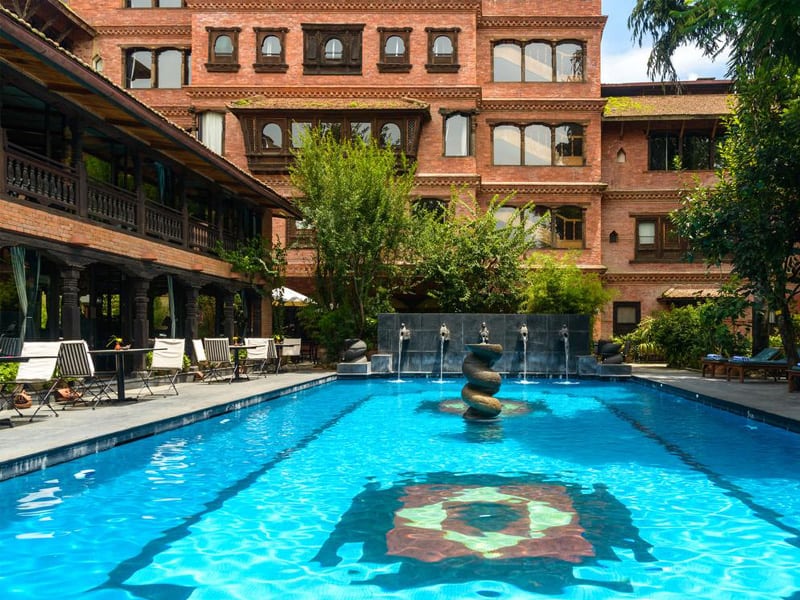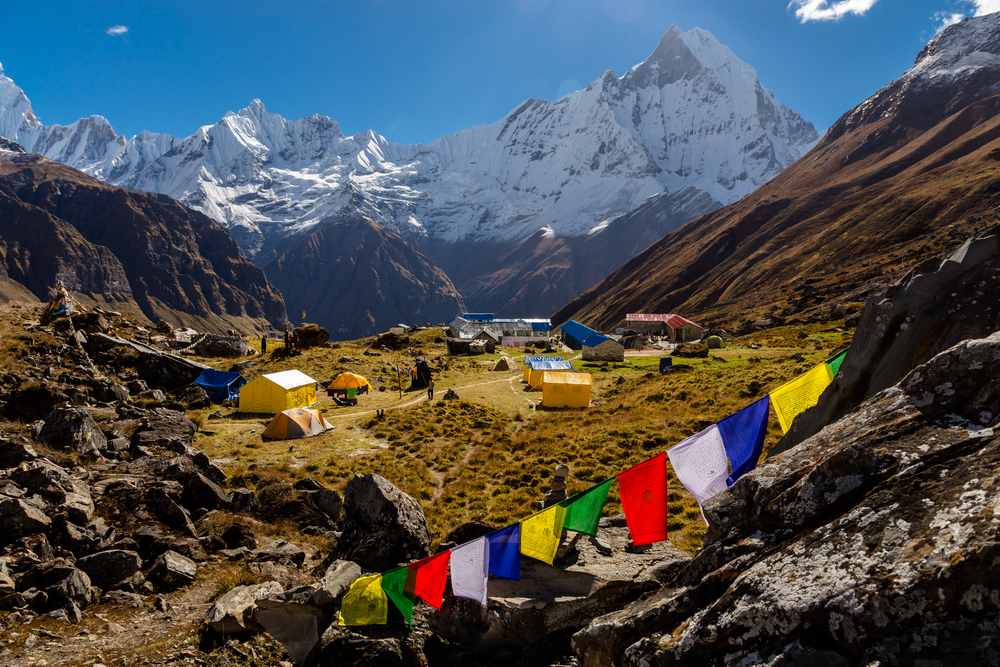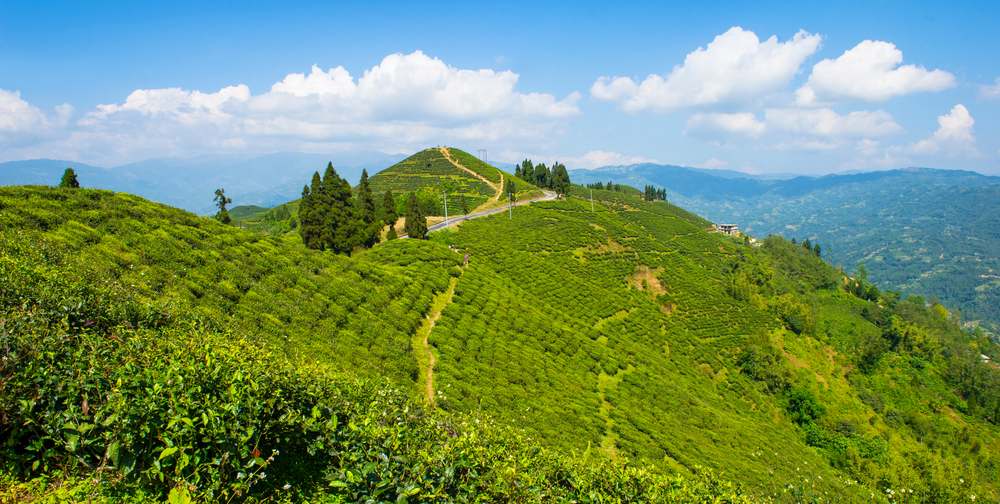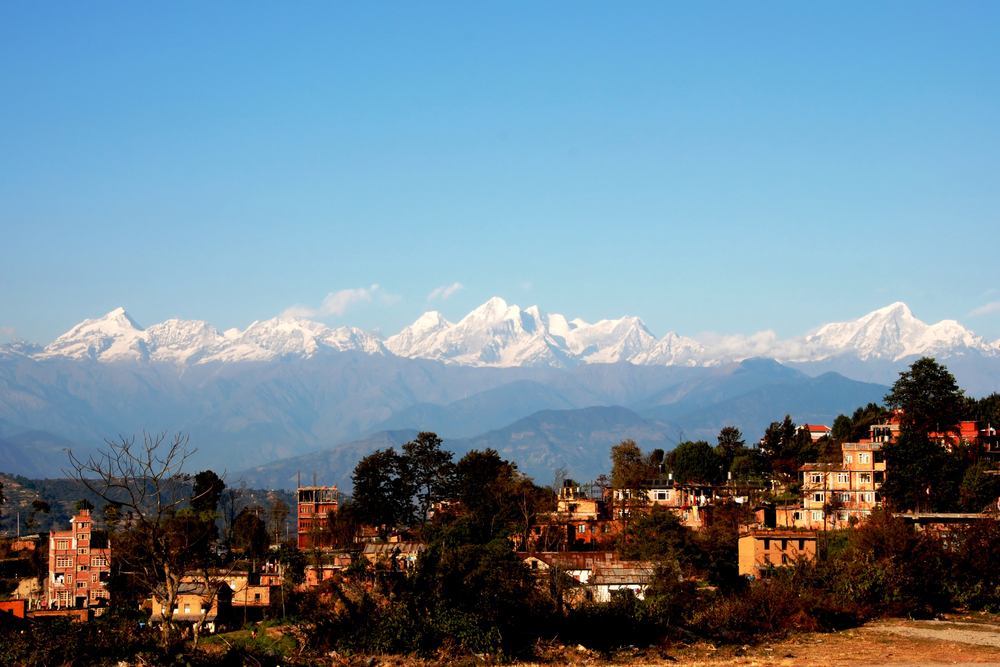Changu Narayan Temple is claimed to be the Kathmandu Valley's oldest Hindu temple still in use. It is one of the famous temples of Nepal. The main shrine, which is built in the two-tiered pagoda style, is guarded on all sides by pairs of actual and legendary monsters — elephants, lions, winged lions, and ram-horned griffons – and its roof struts show some astonishingly beautiful Tantric deity carvings. Changu Narayan Temple is a seven-mile drive east of Kathmandu.
You can take a bus from Kathmandu to Bhaktapur, then another bus to the temple. On the route up to the temple, there is also a museum. The majority of the grounds within the temple complex are open to the public, but only priests are permitted to access the main temple. Foreign nationals must pay 300 Nepalese rupees (USD 2.60) to enter.
Changu Naryan Temple is 15.8 km far from Pashupatinath Temple (if we go through Bhaktapur Road) and is 18.8 km far if we go through Araniko Highway. This Temple is 22.3 km far from Swayambhunath Temple (if we go through Bhaktapur Road) and is 21.8 km far if we go through Araniko Highway. You can visit Changu Narayan Temple, looking at Kathmandu valley weather.
Story of Changu Narayan Temple
A Gwala, or cow herder, had brought a cow from a Brahmin named Sudarshan in ancient times. The cow was well-known for producing a lot of milk. The cow was taken to Changu for grazing by the Gwala. Changu Narayan Temple was a Champak tree forest during the time. The cow would constantly go to the shade of a particular tree while grazing and a boy would come there and sip the cow's milk.
When the Gwala returned home in the evening and began milking the cow, he only obtained a small amount of milk. This went on for a few days. He became despondent and summoned the Brahmin, claiming that the cow was not producing enough milk. Sudarshan agreed with the Gwala after seeing it with his own eyes.
They monitored the cow's daytime activities when she was grazing in the woodland the next day. Both Brahmin and Gwala hid behind a tree. A young black boy emerged from the tree and began drinking the cow milk, much to their amazement. The two guys were enraged because they assumed the youngster was the devil and that the tree was its dwelling. As a result, the Brahmin felled the champak tree.
He then traversed the world on his mount, ‘Garuda,' cursed for the deed, until descending on the hill at Changu Narayan Temple. He lived in obscurity there, subsisting on milk stolen from a cow. Vishnu was beheaded when Brahmin cut down the tree, which absolved Lord Vishnu of his sins. Brahmin and Gwala resolved to worship the area after hearing Vishnu's teachings and built a tiny shrine in the name of Lord Vishnu.
Since then, the location has been revered. Sudarshan's descendent is still a temple priest, and the Gwala's descendants are known as Ghyuitars (conservators). There's also another legend. Pranjal was a powerful warrior who lived around 400 years ago. He is still alive. He was the most powerful person in the country. Changu Narayan, a well-known warrior throughout Nepal, challenged Pranjal. ChanguNarayan beat him and earned the hearts of the Nepalese people, therefore this temple was built as a memorial to him.
Architecture and temple of Changu Narayan Temple
The oldest temple in Nepal, Changu Narayan Temple, is said to be the oldest in the country. With exquisite embossing works, it remains a landmark in Nepali temple construction. The temple has a two-story roof and is built on a stone plinth. According to Professor Madhan Rimal of Tribhuvan University's Department of Sociology and Anthropology, the temple is neither Shikhara nor pagoda in design. It has a typical Nepali temple architectural style, which he would like to describe. At Gokarna Mahadev, there are many such features. Sculptures and works of art dedicated to Lord Vishnu surround the shrine.
Within the courtyard of the main temple, we may also discover the temples of Lord Shiva, Ashta Matrika, Chhinnamasta, Kileshwor, and Krishna. The temple has four entrances, each of which is guarded by a life-size pair of animals like lions, sarabhas, griffins, and elephants on either side. The struts that support the roof are carved with Lord Vishnu's ten incarnations and various icons. The entrance door is ornately carved with Naga designs (snakes).
The Chakra, Sankha, Kamal, and Khadga are located at the top of a stone pillar on the main entrance gate (i.e. western entrance gate). An inscription in Sanskrit can be found on these stone pillars. The stone inscription pillar was erected by Licchavi (kingdom) King Manadeva in 464 AD and is regarded to be Nepal's earliest inscription. The following monument can be found on the right side of the temple courtyard after coming from the main entrance (Eastern gate).
Garuda: Lord Vishnu's flying vehicle with a human face and a devotee of Vishnu. Historical pillar constructed by Mandeva in 464 AD. King of Kantipur Bhupalendra Malla and his queen BhuwanLakshmi are depicted in this statue. Chanda Narayan (Garuda Narayan) is a stone sculpture of Vishnu riding Garuda from the seventh century. The 10 rupee paper note issued by Nepal Rastra Bank features this sculpture. Sridhar Vishnu is a 9th century stone sculpture portraying Vishnu, Laxmi, and Garuda standing on diverse themes' pedestals. Vaikuntha Vishnu is a 16th-century sculpture showing Vishnu seated on the six-armed Garuda in the Lalitasana position, with Laxmi seated on Vishnu's lap.
Temple dedicated to Chhinnamasta Devi, who decapitated herself and fed the famished Dakini and Varnini with her blood. Vishwaroopam: A magnificently carved 7th century stone sculpture depicting a scenario from the Bhagwat Gita in which Lord Krishna displays his universal form to his disciple Arjun. Vishnu Vikrant: Trivikram Vishnu's 7th-century sculpture depicting the popular Hindu story of Lord Vishnu and his beloved Bali Raja.
Narasimha Is a sculpture that portrays Lord Vishnu's incarnation Narasimha killing the evil King Hiranyakashyap to save his loving devotee Prahalad from the demon King Hiranyakashyap in the 7th century. Kuleshwor: two-story temples dedicated to Lord Shiva, who is said to have appeared at this location to guard the hill. Hindus revere the main figure in the shrine as Garuda Narayan, while Buddhists worship it as Hariharihari Vahan Lokeshwara. The image is only visible to the priest.
Conclusion
If you want to see the beautiful museum, beautiful hills with beautiful forest and beautiful temples then ChanguNarayan Temple is the best for you. The moment you reach there you will know how quiet and peaceful there is. There is a beautiful place where you can rest under the tree enjoying the beautiful view of Kathmandu valley and lake.







